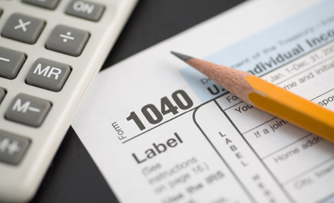Amended Returns: Why, When, and How

Amended Returns: Why, When, and How
If you’ve filed a federal income tax return that you know does not accurately reflect your income and deductions, what should you do now? It depends on the year of the return as well as what you erroneously reported or failed to report.
Time limits
There is only a limited period in which you can amend a tax return. Usually, you must file within 3 years of the time you filed your return. If you filed before the due date of the return (e.g., February 23), the 3-year period runs from the due date (April 15), not the date of filing. If you received a filing extension to October 15 and filed before that extended due date (e.g., August 16), that earlier filing date (August 16) is the date used for the 3-year period.
There is added time in special situations. In the case of worthless securities or a bad debt, you have 7 years (instead of 3 years) to file an amended return in order to make a refund claim for overpaid taxes resulting from not reporting these write-offs on your original return.
Once the period for filing an amended return expires, you’re out of luck. This is so regardless of the amount of tax involved. The only exception: if you are unable to manage your financial affairs due to a physical or mental impairment that has lasted a year or is expected to last this long or result in death and you do not have a spouse or someone else authorized to handle your financial affairs. If you have this financial disability, the refund period is suspended for the period of disability.
Note: If you are filing an amended return to claim an additional refund, the IRS advises that you wait until you receive the initial refund (you can cash the check); then file the amended return for the additional refund claim.
Whether to file an amended return
File an amended return if:
- You want to change your filing status. If you changed for your filing status but didn’t take it into account correctly, you can amend. For example, if you were legally divorced by December 31, you cannot file a joint return for the year and should amend your return to claim the correct filing status (e.g., single, head of household). However, if you are married and filed jointly, you cannot decide to file separately after April 15 has passed (if you filed separately, you can file jointly within the period for amending returns).
- You omitted income. For example, if you receive a 1099 or a Schedule K-1 reporting additional income after you filed, amend your return to include this omitted income.
- You failed to claim deductions or tax credits to which you were entitled (or claimed them when you weren’t entitled to). For example, if you claimed the standard deduction but now see that itemizing would result in a lower tax, amend your return.
Don’t file an amended return if:
- You made a math error. The IRS will correct it and send you notification.
- You forgot to attach a W-2 form or other required documentation. If needed, the IRS will ask for it. While you’re supposed to attach a W-2 form to a paper return, the IRS probably doesn’t need it because it can view the employer copy to verify your wages.
Your discretion. If you didn’t take a write-off you were entitled to, it’s really up to you to decide whether to file an amended return. Weigh the refund you can recoup against the cost of filing an amended return if you use a tax professional to do it. Also consider the audit risk; while the chances of being audited are very low, amended returns are generally considered to have a higher audit risk than original returns (this is based on the opinion of some tax professionals and not on IRS audit statistics).
How to file an amended return
Whether you filed Form 1040, 1040A, or 1040EZ, you must use Form 1040X as your amended return. Obtain the right Form 1040X, which is the one that relates to the year you are amending (e.g., 2012 Form 1040X if you are amending your 2012 return). If are you are amending returns for more than 1 year, use separate 1040Xs and submit them separately (not in the same envelope).
Indicate on the form what change(s) you want to make. Attach any additional forms and schedules as well as any supporting documentation if necessary or helpful.
File the return by mail because amended returns cannot be filed electronically. This is so even if you filed your original return electronically.
If you owe additional taxes as a result of an amended return, send the added taxes (or make an electronic payment for the tax year of the amended return) to limit interest and penalties that may result.
You may also need to contact your state if changes to your federal income tax return impact your state income taxes. If you don’t do this, you may later hear from your state. The IRS shares tax information, including amended returns, with the states.
Conclusion
The tax year does not necessarily close with the filing of your return. You may want or need to revisit the return. Consider whether you still have time to do it, whether you should or must amend the return, and how to do it right.



